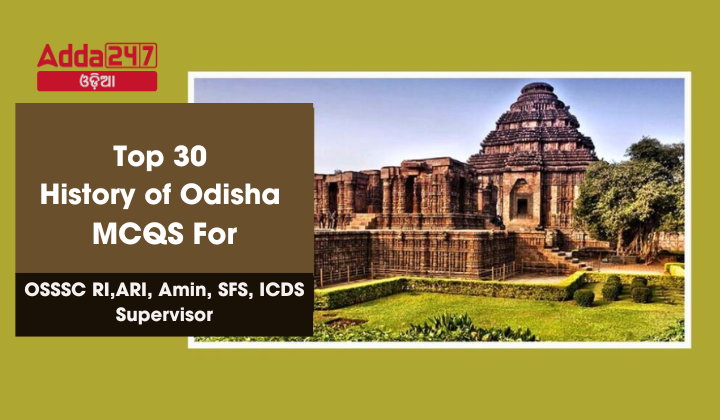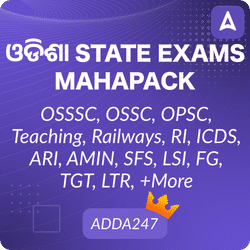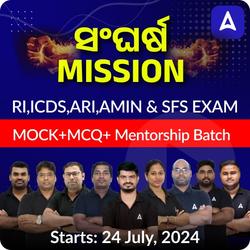Odisha, with its rich cultural heritage and historical significance, has been a center of various historical events and developments. For candidates preparing for OSSSC examinations, understanding the history of Odisha is crucial. Here’s a compilation of 30 multiple-choice questions to aid in your preparation.
Top 30 History of Odisha MCQS For OSSSC RI,ARI, Amin, SFS, ICDS Supervisor
- In ancient times, what was Odisha known as?
(a) Magadha
(b) Kalinga
(c) Dantapur
(d) Maurya
Ans: (b) Kalinga - Which famous war was fought by Asoka of the Mauryan Empire in Kalinga?
(a) Battle of Kurukshetra
(b) Battle of Plassey
(c) Kalinga War
(d) Battle of Panipat
Ans: (c) Kalinga War - According to Buddhist literature, what was the capital city of Kalinga?
(a) Magadha
(b) Pataliputra
(c) Dantapur
(d) Udayagiri
Ans: (c) Dantapur - Which ruler integrated Kalinga into the Magadha empire around 350 BC?
(a) Chandragupta Maurya
(b) Asoka
(c) Dhanananda
(d) Mahapadmananda
Ans: (d) Mahapadmananda - What do the pre-Mauryan black polished potteries and punch-marked coins found in Asurgarh and Sonepur indicate?
(a) The artistic skills of the Kalinga people
(b) Flourishing economic condition during the Nanda rule
(c) The influence of Buddhism
(d) The military strength of Kalinga
Ans: (b) Flourishing economic condition during the Nanda rule - What significant historical inscription was discovered at Udayagiri in Bhubaneswar?
(a) Rock Edict XIII
(b) Hatigumpha inscription
(c) Junagadh inscription
(d) Nasik inscription
Ans: (b) Hatigumpha inscription - Who founded the Maurya Empire by defeating the last Nanda ruler, Dhanananda?
(a) Bindusara
(b) Chandragupta Maurya
(c) Asoka
(d) Kautilya
Ans: (b) Chandragupta Maurya - Why did Emperor Asoka attack Kalinga?
(a) To spread Buddhism
(b) To gain power over overseas trade
(c) To unite India under one rule
(d) To avenge a previous defeat
Ans: (b) To gain power over overseas trade - What was the aftermath of the Kalinga War for Emperor Asoka?
(a) He expanded his empire further
(b) He adopted Buddhism and renounced violence
(c) He established a new capital in Kalinga
(d) He faced a rebellion from his ministers
Ans: (b) He adopted Buddhism and renounced violence - Which two separate Kalinga edicts of Asoka describe the Mauryan administration in Kalinga?
(a) Dhauli and Jaugarh
(b) Nasik and Junagadh
(c) Udayagiri and Ratnagiri
(d) Sarnath and Sanchi
Ans: (a) Dhauli and Jaugarh - Who was the first to establish Muslim rule in Odisha?
(a) Aurangzeb
(b) Daud Khan Karrani
(c) Sulaiman Khan Karrani
(d) Qutlu Khan Lohani
Ans: (c) Sulaiman Khan Karrani - In which year was Daud Khan Karrani defeated in the battle of Tukario?
(a) 1570
(b) 1575
(c) 1580
(d) 1585
Ans: (b) 1575 - The Treaty of Katak resulted in which of the following?
(a) Mughal control over Odisha
(b) Independence of Bengal
(c) Retention of Odisha by Daud Khan Karrani
(d) Complete annexation by Mughals
Ans: (c) Retention of Odisha by Daud Khan Karrani - Who was the Rajput General under Akbar that initiated Mughal rule in Odisha?
(a) Qutlu Khan Lohani
(b) Mansingh
(c) Ahmed Beg
(d) Zaman Teharani
Ans: (b) Mansingh - Under Akbar’s reign, how many sarkars was Odisha divided into?
(a) 3
(b) 4
(c) 5
(d) 6
Ans: (c) 5 - Which Governor declared himself independent and assumed the title of ‘Qutlu Shah’?
(a) Nasir Khan
(b) Muhammad Baqar Khan
(c) Qutlu Khan Lohani
(d) Zaman Teharani
Ans: (c) Qutlu Khan Lohani - Under whose reign was Odisha made into a separate Subah?
(a) Akbar
(b) Jahangir
(c) Shah Jahan
(d) Aurangzeb
Ans: (b) Jahangir - During Shah Jahan’s rule, where was the administrative seat of Odisha?
(a) Puri
(b) Cuttack
(c) Bhadrak
(d) Raj Mahendry Dandpat
Ans: (b) Cuttack - Who was appointed the Governor of Odisha under Aurangzeb?
(a) Mansingh
(b) Muhammad Baqar Khan
(c) Khan-i-Duran
(d) Kalyan Mal
Ans: (c) Khan-i-Duran - Which rebel king of Khurda was defeated during Aurangzeb’s period?
(a) Mukundadeva I
(b) Nasir Khan
(c) Qutlu Khan Lohani
(d) Ahmed Beg
Ans: (a) Mukundadeva I - What was the Paika Rebellion also known as?
(a) Sepoy Mutiny
(b) Khurda Rebellion
(c) Santhal Rebellion
(d) Indigo Rebellion
Ans: (b) Khurda Rebellion - In which year did the Paika Rebellion take place?
(a) 1804
(b) 1817
(c) 1825
(d) 1857
Ans: (b) 1817 - Who was the leader of the Paika Rebellion?
(a) Jayee Rajguru
(b) Mukunda Dev II
(c) Bakshi Jagabandhu
(d) Prananatha Patnaik
Ans: (c) Bakshi Jagabandhu - What was the main cause of the Paika Rebellion?
(a) Introduction of new salt laws
(b) Heavy land revenue policy
(c) Monopoly on trade
(d) Forced conversion
Ans: (b) Heavy land revenue policy - Who was considered the first martyr of the early freedom struggle against British rule in Odisha?
(a) Bakshi Jagabandhu
(b) Mukunda Dev II
(c) Jayee Rajguru
(d) Mirhaidar Ali
Ans: (c) Jayee Rajguru - Which tribes accepted Bakshi Jagabandhu as their leader during the Paika Rebellion?
(a) Santhals and Gonds
(b) Banapur and Ghumusar tribes
(c) Oraons and Mundas
(d) Bhils and Khasis
Ans: (b) Banapur and Ghumusar tribes - What did the Paikas do on 29th March, 1817, in Khurda?
(a) Signed a peace treaty
(b) Established a new kingdom
(c) Burnt government buildings and sacked the treasury
(d) Surrendered to British forces
Ans: (c) Burnt government buildings and sacked the treasury - Who was the prominent Muslim fighter that supported Bakshi Jagabandhu during the Paika Rebellion?
(a) Mirhaidar Ali
(b) Sachi Routray
(c) Prananatha Patnaik
(d) Gokul Mohan Rai Chudamani
Ans: (a) Mirhaidar Ali - What administrative change did the British introduce after the Paika Rebellion?
(a) Complete autonomy to local rulers
(b) Reduction in salt prices
(c) Employment of Oriyas in government services
(d) Abolition of land revenue
Ans: (c) Employment of Oriyas in government services - In which year did Bakshi Jagabandhu surrender to the British?
(a) 1817
(b) 1825
(c) 1830
(d) 1857
Ans: (b) 1825










